With a detailed syllabus that would make any college prof proud, a culinary instructor vows to make a capable cook out of her ramen-and-burger-slinging son before he leaves home for college in 2016.
As a culinary instructor and a food writer who promotes home cooking as healthful, communal, economical and sustainable, I must make a confession. My teenage kids don’t know how to cook much.
Yes, they live in a food-centric home. They eat full, cooked breakfasts (smartphones allowed), carefully packed lunches and nightly family meals (smartphones not allowed). The content of their plates routinely reflects an ever changing rainbow. They are willing to try new and interesting ingredients, at least once. And most nights, they do the dishes. But generally it is I – or my husband in a pinch – who wields the chef’s knife and mans the stove.
Call it controlling. I do control the menu. Call it helicopter parenting. I need to know with certainty they are eating well. Call it a side effect of over-scheduled adolescent lives because sometimes juggling basketball practice and jazz band means dinner is served at 9 p.m.
Call it what you will, but the fact of the matter is my 17-year-old son Owen is scheduled to graduate from high school this time next year, and the half-dozen foods he can cook without me present are burgers, frozen oven fries, plain pasta, Chinese dumplings, packaged ramen noodles and cheese quesadillas. As neither a mother nor a culinary professional can I in good conscience launch him from my kitchen with that totally lame repertoire.
Those who know me won’t be surprised that I have a plan, and this plan involves food. (If you don’t know me, consider an emulsion of Julie, The Love Boat’s cruise director, and that crazy aunt who both embarrasses you and makes you eat more than you intended at every family reunion.) In each of the 15 months that will pass between now and when he is threatening to leave for college in southern California, I’ll help Owen master one recipe through which he’ll acquire a set of skills that will feed him well, remind him of home, and build strong social ties over big plates of food.
June 2015: Hidden Vegetable Bolognese
Owen’s penchant for pasta strong-arms his English, Polish and Irish genes. It always has. In 1999, when my husband was in graduate school, our family of three lived in as many rooms in a college residence hall with a makeshift kitchen comprising a bank of cabinets, a hot plate and a fridge. It was there that I first bastardized Marcella Hazan’s Bolognese Meat Sauce by doubling the carrots in her soffritto and adding finely chopped zucchini to produce for my then 1-year-old a well-rounded meal on my two-burner heat source. He’s eaten my version of the recipe – with all shapes of pasta – hundreds of times since. When we made it together for the first time last week, his eyes grew wide as he witnessed the vegetable-to-meat ratio, for sure. But this realization did not stop him from refilling his bowl. (See recipe, Page C4)
July 2015: Steamed Vegetables
I don’t often agree with the tone or the literal lyrics in Owen’s favored rap music. But I do concur with Action Bronson – a chef turned rapper from Queens – when he tell listeners in his song ‘When I Rise’ that “Seasonal vegetables (are) lookin’ exceptional.” Next month, I’ll channel chef Bronson when I teach Owen how to pick his veggies, hone his knife skills to cut them uniformly for even cooking, and take an hour early in the week to gently steam and store them for use throughout his week.
August 2015: Refrigerator Scramble
Owen doesn’t like eggs and bucks the prospect of learning to cook them. Too bad, I’m still the mother, and I think everyone needs to know how to cook an egg or two. If I show him how to take all the leftovers in the fridge he does like, and use eggs as the binder, he’ll get bonus lectures on recipe adaptability and food waste reduction.
September 2015: Skinless Broiled Salmon
I learned skin removal trick about 10 years ago from a friend who shares Owen’s penchant for salmon. If you line a baking sheet with foil and skim-coat it with a neutral oil, you can lay down a side of salmon skin side up. Under a hot broiler, that skin will bubble and char, simplifying its removable with a pair of tongs. That’s the easy part. Flipping the fish to broil its prettier side takes skill and an understanding of the value of a good fish spatula.
October 2015: Yellow Rice
If you give a boy a metallic, cellophane tube of Vigo yellow rice, he’ll follow the directions and happily eat once. If you buy him a big bag of rice and teach him how to dress it up with things like chicken broth, saffron and olive oil, he’ll die from neither hunger nor boredom.
November 2015: Roast Chicken
Nothing welcomes my family home on a cold night more than the smell of a roasting chicken. And nothing soothes their winter colds better than homemade chicken stock. This month, Owen learns how simple it is to pull off both, and get a good dose of food safety tutelage in the process.
December 2015: Sugar Cookies
This one is a selfish venture. Owen stopped decorating Christmas cookies with me when he was nine. We’ll tackle the delicate rolled ones that require patience and precision to cut and decorate, as well as the ones that come together in less than an hour because his future son or daughter will forgot to mention they are supposed to bring cookies to the class party the next day.
January 2016: Pizza Dough
Owen knows how a Friday night homemade pizza party can foster friendships in a new community. We’ve employed this mechanism within two months of moving to every new place we’ve lived. We’ll mix, knead, toss and stretch Rosemary’s Classic Pizza Dough from Julia Child’s “The Way to Cook,” and in the process he’ll get schooled in low-budget entertaining.
February 2016: Hot Chocolate
Packets of hot cocoa mix are good in a pinch on a cold day in February and benefit greatly by replacing the hot water with hot milk. This month, we’ll sip hot chocolate made from melted chocolate and milk and hot cocoa made from cocoa powder, sugar and milk and Owen can decide if these subsequent upgrades are worth the effort. As we take the time to sit and sip, I’ll add the inability to find a good imitation of this notably northern delight to my long list of reasons why California might just be a little too far from the nest.
March 2016: Potato Gnocchi
When I asked Brunswick High School Consumer and Life Studies teacher Carla Selberg, what culinary skills she felt were paramount to getting by in the real world, she asked her students what they thought. They said they want to be able to read a bad recipe – or no recipe at all, just their grandmother’s notes on the back of an envelope – and make it taste like they remembered. On the rainy days in March, Owen will learn how to combine potatoes, flour, eggs and the necessary humidity in a mixture that feels just as my Nonna taught me it should.
April 2016: Peanut butter–Buttercream Frosting
Owen needs to know how to make his sister’s favorite cake – dark chocolate with peanut butter–buttercream frosting – for her birthday for when I am not around to pull it off. We’ll make this five-ingredient frosting to cover cakes from pastry chef Joanne Chang’s book “Flour” and from a Duncan Hines box. He’ll come to understand the value of accurate weights and measures in baking from scratch as well as necessary shortcuts in the face of real time constraints.
May 2016: Sear and Sauce Pork Chops
I already know what I will give to Owen when he gets his first kitchen: a customized box of Penzey’s spices. In May, we’ll play with spice mixes to flavor pork chops before they are seared, and concoct sauces with various liquids that finish the dish and make the pan easier to clean by loosening the fond – the flavorful residue left on the vessel’s surface after a cook sears protein.
June 2016: Strawberry Shortcake
Call it a biscuit, call it a scone. Make it sweet. Make it savory. Everyone should know how to take flour, salt, baking powder, fat and a liquid to make this universal product with their own two hands to serve for breakfast, lunch, dinner or dessert. This particular rendition will catch Owen’s attention with the addition of local strawberries.
July 2016: Basic French Vinaigrette
No starving student should waste good money on bottled salad dressing. A minced allium, salt, Dijon mustard, vinegar, oil and elbow grease is all you need to make your own. Spend the money on good lettuce from the farmers market instead.
August 2016: Skillet Cornbread
Owen asked if he could have the 12-inch cast iron skillet, a permanent fixture on my stove, as a graduation present from my version of cooking school. He’ll have to sign an affidavit saying he’ll respect it, cleaning it only with coarse salt and oiling it after each use. But yes, I will give it to him once he masters my favorite skillet cornbread recipe and understands that it’s the perfect accompaniment to a big pot of something – a favorite stew, chili or soup – made for whenever you’re sending a loved one off on a new adventure or welcoming them home again soon.
Hidden Vegetable Bolognese
I added more vegetables to the mix because my son his whole life has eaten copious amounts of this sauce and, even though the vegetables are cooked for hours, it still seems a more well-rounded meal prepared this way. When he was little, I served it with all sorts of pasta shapes for fun. Now it’s strictly spaghetti or the traditional tagliatelle because having to twirl the pasta on a spoon slows the pace at which my now 17-year-old can consume it.
Makes enough sauce for 10 servings, which can be used in 2 batches.
2 large onions
2 medium zucchini
4 large carrots
4 celery stalks
2 tablespoon vegetable oil
4 tablespoons butter, plus more for tossing pasta
1 pound ground beef
1 pound ground pork
Salt
Black pepper
1 cup whole milk
Whole nutmeg
2 (28-ounce) cans imported Italian plum tomatoes
1 cup dry white wine
1¼ to 1½ pounds pasta
Freshly grated Parmesan cheese for serving
Peel and roughly chop the onions, zucchini, carrots and celery. Transfer to a bowl of a food processor and pulse to fully chop and combine the vegetables. The pickier the eaters at your table, the finer you’ll want the chop.
Put the oil and butter in a large pot and turn the heat on to medium. Add the vegetables, stirring them to coat them in the fat, and cook until they release their water and become soft (4 to 6 minutes). Add the ground beef and pork, a large pinch of salt and a few grindings of pepper. Crumble the meat with a wooden spoon, stir well and cook until the meat has lost its raw, red color, about 6 to 8 minutes.
Add the milk and let it simmer gently, stirring frequently, until it has bubbled away completely. Add a tiny grating, about 1/8 teaspoon, of nutmeg, and stir. Dump the tomatoes into a large bowl and use your hands to squeeze them to pieces. I like to take the cores out at this point, as I don’t like those in the sauce because they don’t break down during cooking.
Add the wine to the pot, let it simmer until it has evaporated, then add the tomatoes and stir thoroughly to coat all the ingredients well. When the tomatoes begin to bubble, turn the heat down so that the sauce cooks at the laziest of simmers, with just an intermittent bubble breaking through to the surface. Cook, uncovered, for 3 hours or more, stirring from time to time. While the sauce is cooking, you are likely to find that it begins to dry out and the fat separates from the meat. To keep it from sticking, add 1/2 cup of water whenever necessary. At the end, however, no water at all must be left and the fat must separate from the sauce. Taste and correct for salt.
Cook the pasta and drain it. Toss half of the sauce with the cooked pasta, adding a tablespoon of butter, and serve with the grated Parmesan on the side.
The remaining half of the sauce will keep in the refrigerator for a week or in the freezer for 3 months.
Christine Burns Rudalevige is a food writer, recipe developer and tester and cooking teacher in Brunswick. Contact her at:
cburns1227@gmail.com
Send questions/comments to the editors.

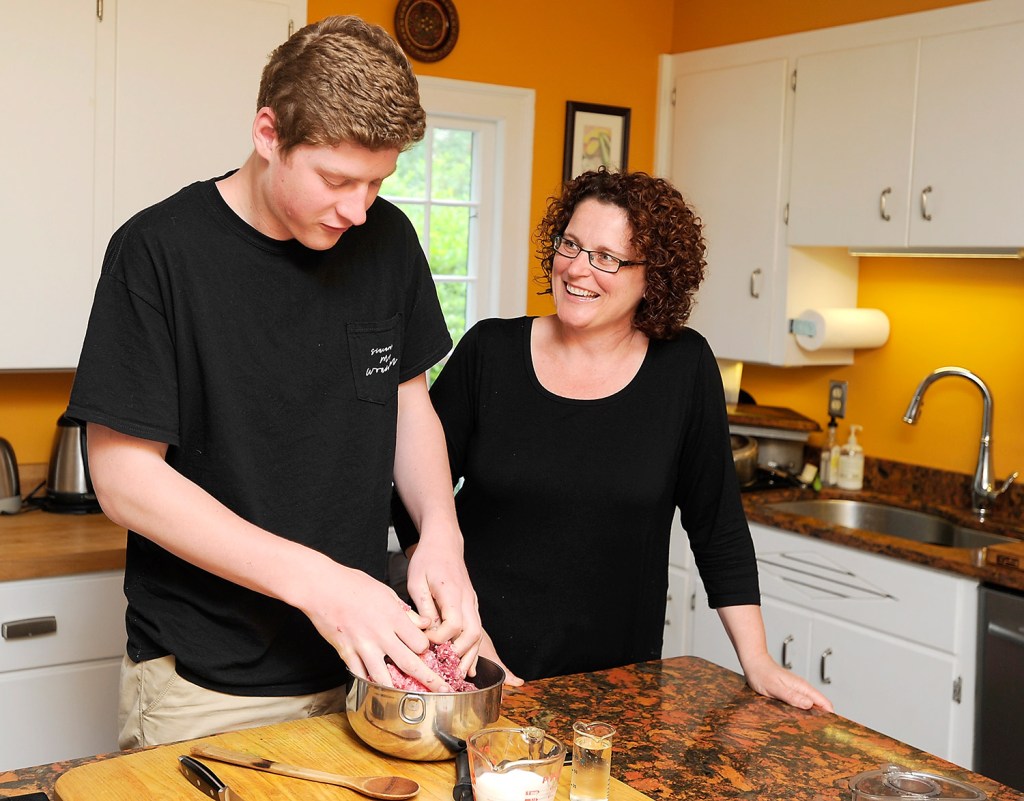
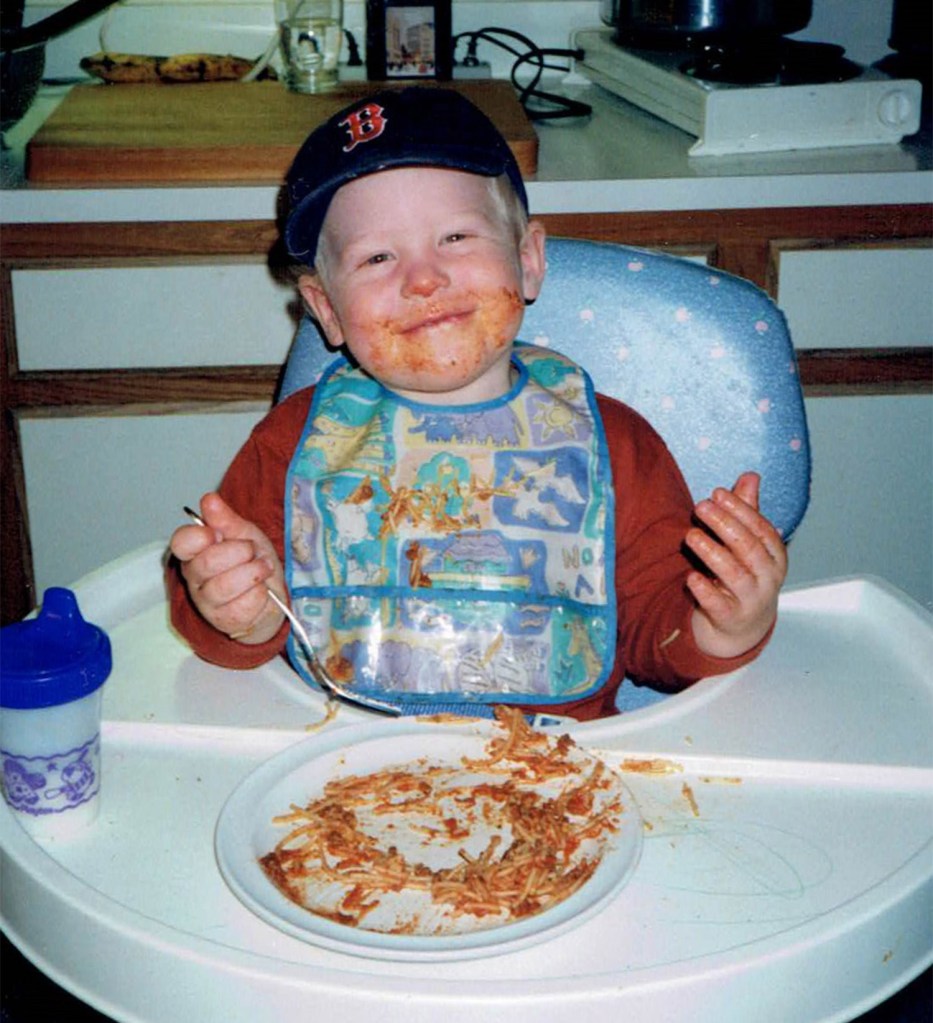
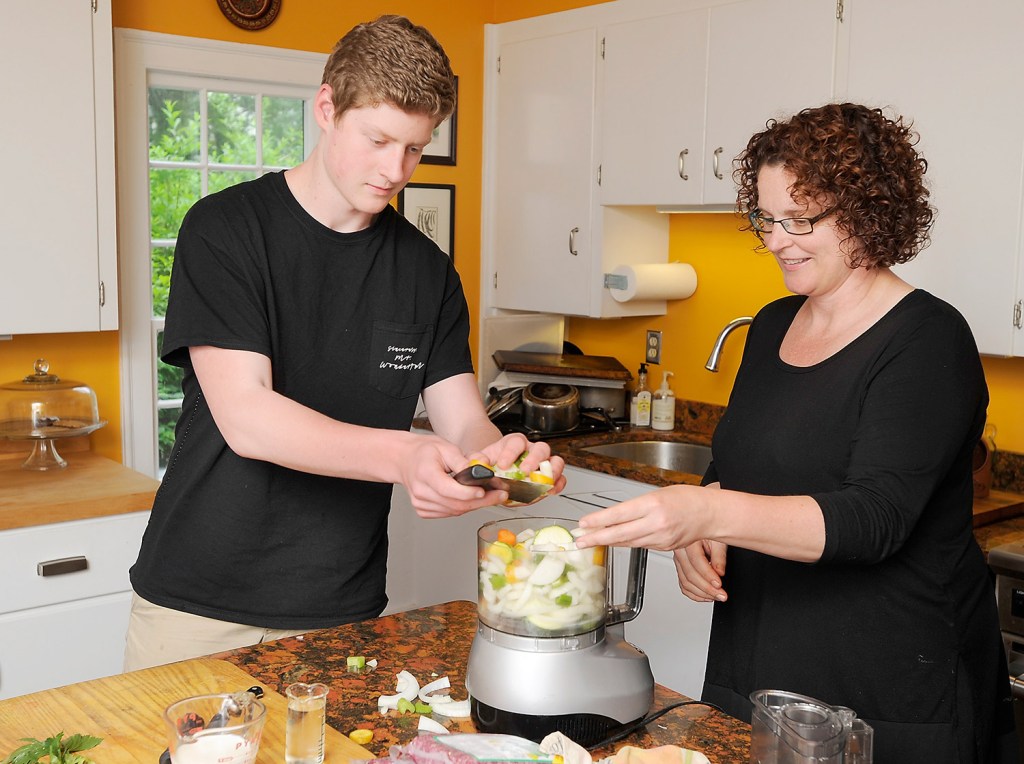
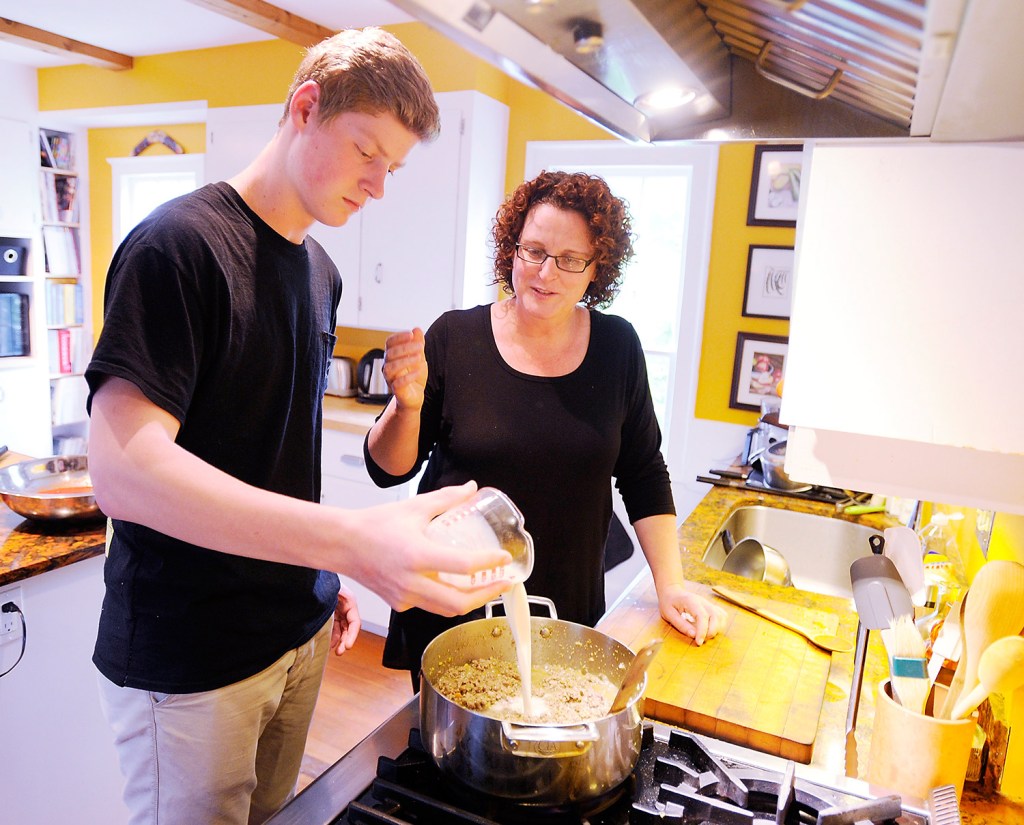
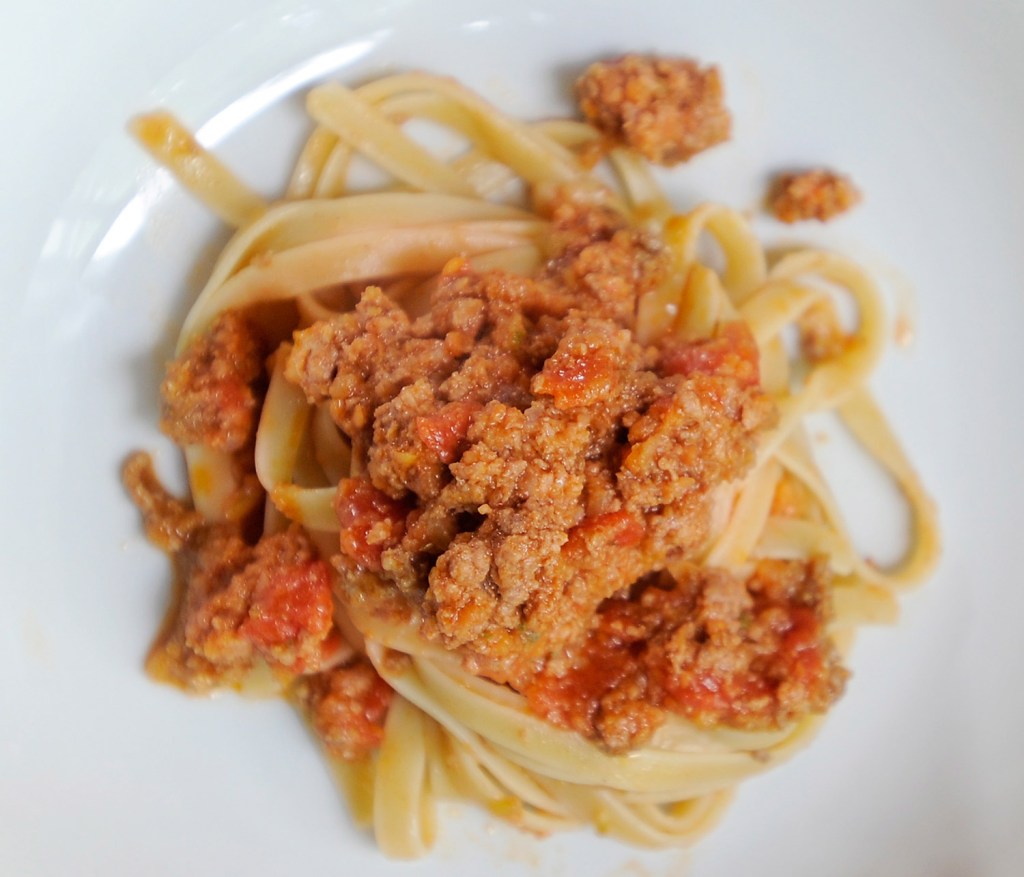

Success. Please wait for the page to reload. If the page does not reload within 5 seconds, please refresh the page.
Enter your email and password to access comments.
Hi, to comment on stories you must . This profile is in addition to your subscription and website login.
Already have a commenting profile? .
Invalid username/password.
Please check your email to confirm and complete your registration.
Only subscribers are eligible to post comments. Please subscribe or login first for digital access. Here’s why.
Use the form below to reset your password. When you've submitted your account email, we will send an email with a reset code.